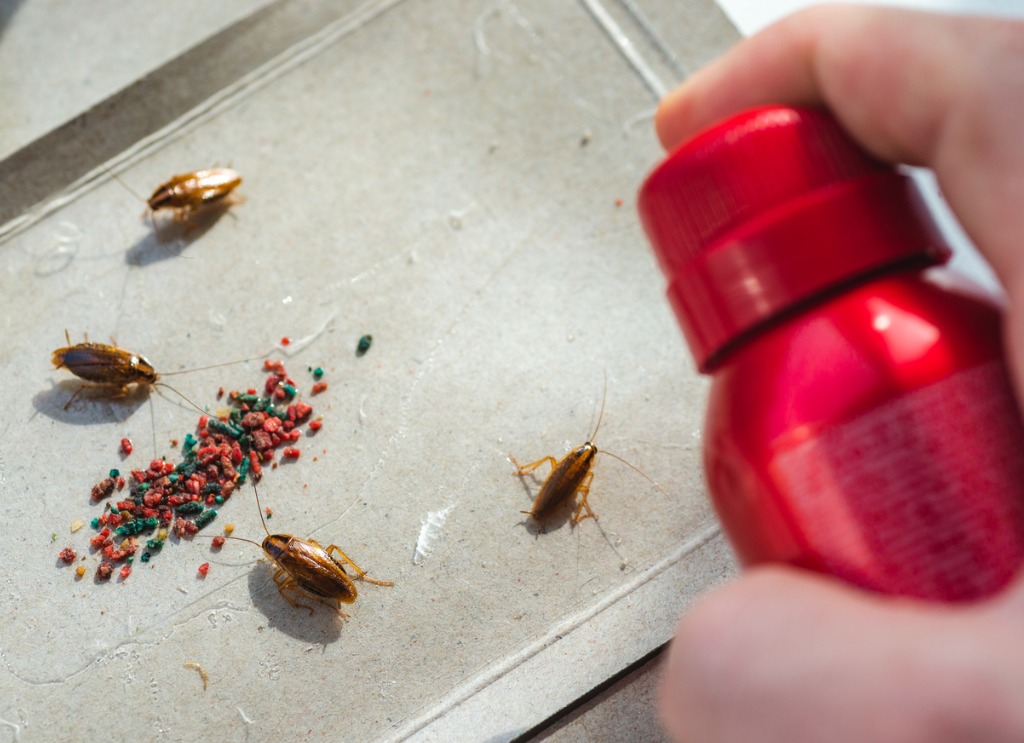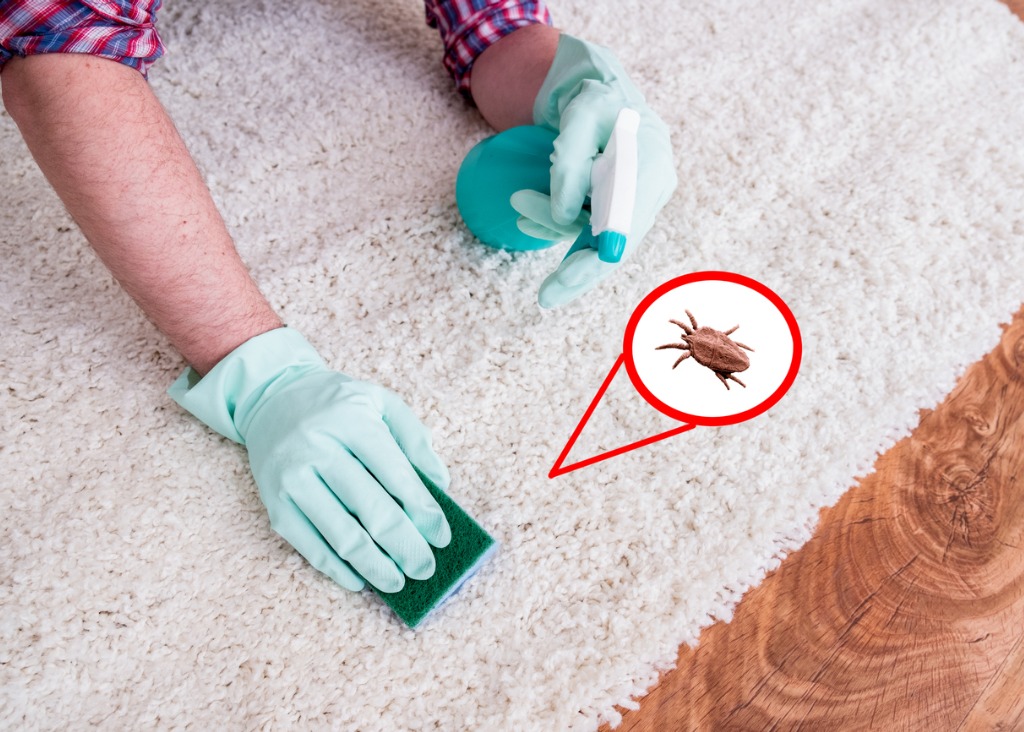Cockroaches, those notorious survivors of the insect world, are unwelcome guests in both residential homes and commercial establishments. Beyond being a nuisance, they pose significant health risks. In this comprehensive guide, we will provide detailed insights and strategies for effective cockroach control in residential and commercial settings. By the end of this guide, you will be well-equipped to prevent and manage cockroach infestations, ensuring a clean and healthy environment.
Key takeaways
- Cockroach infestations result from conducive environmental conditions and food availability.
- Cockroaches pose health risks through disease transmission, allergen production, and property damage.
- Success in control relies on proactive measures, vigilance, and sanitation.
- Residential prevention includes cleanliness, sealing entry points, and proper food storage.
- Commercial spaces should prioritize regular cleaning, staff education, and stringent food protocols.
- Effective control methods include baits, insecticides, eco-friendly options, and routine inspections.
What causes cockroach infestations?
Cockroach infestations are primarily caused by conducive environmental conditions and the availability of food, water, and shelter. In residential and commercial spaces, clutter, inadequate sanitation, and food residue left in open containers or crumbs on surfaces can attract cockroaches. Dark, warm, and moist areas like basements, kitchens, and bathrooms serve as ideal hiding spots. Additionally, cockroaches can be introduced through infested items or by traveling through walls and pipes. Once established, these pests breed rapidly, making early detection and effective sanitation crucial in preventing and addressing cockroach infestations.
What are the health risks of cockroach infestations?
Cockroach infestations pose significant health risks as these pests are known carriers of various pathogens and allergens. They can contaminate food and food preparation surfaces with bacteria such as Salmonella and E. coli, potentially leading to foodborne illnesses. Additionally, cockroach excrement, shed skins, and saliva contain allergenic proteins that can trigger asthma and allergies, especially in children. Their presence can exacerbate respiratory conditions and pose a particular threat to individuals with compromised immune systems. Therefore, addressing cockroach infestations is crucial not only for preventing food contamination but also for safeguarding the health and well-being of occupants in affected residential and commercial spaces.
How can success in cockroach control be monitored?

Success in cockroach control can be monitored through a combination of proactive measures and ongoing vigilance. Regular inspections of the treated areas for signs of cockroach activity, such as droppings, shed skins, or live insects, can indicate the effectiveness of control efforts. Monitoring traps strategically placed in kitchens, bathrooms, and other cockroach-prone areas can provide valuable data on the level of infestation. Additionally, tracking the reduction in cockroach sightings and complaints from residents or employees is a practical way to gauge control success. Consistent sanitation practices, preventive measures, and the absence of new infestations over time are key indicators that the control strategies are working effectively.
Understanding the Cockroach Threat
Before we delve into effective cockroach control methods, it’s crucial to grasp the potential dangers associated with cockroach infestations:
1. Disease Transmission
Cockroaches are known vectors for various pathogens and bacteria. They pick up these harmful microorganisms while crawling through unsanitary areas and can transmit them to humans by contaminating food, utensils, and surfaces.
2. Allergen Production
Cockroach allergens are a significant concern, particularly for individuals with respiratory conditions like asthma. These allergens can trigger allergies and exacerbate existing health problems. Surprisingly, even dead cockroach bodies can release allergenic particles into the air.
3. Property Damage
Cockroaches are not only a health threat but also a property threat. They can chew through paper, cardboard, and even fabric. Additionally, their feces and shed skins can stain and deteriorate surfaces, leading to costly repairs.
4. Rapid Reproduction
Cockroaches are prolific breeders, with a single female capable of producing hundreds of offspring in her lifetime. This exponential reproduction rate emphasizes the urgency of addressing an infestation promptly to prevent it from spiraling out of control.
Now that we understand the potential risks, let’s explore the best practices for effective cockroach control:
Residential Cockroach Control

1. Maintain Impeccable Cleanliness
Prevention is the cornerstone of residential cockroach control. A consistently clean home significantly reduces the chances of a cockroach infestation. Keep your home spotless and free of food debris. Cockroaches are irresistibly drawn to crumbs and food residue, so make it a habit to sweep, mop, and wipe down counters and appliances regularly.
2. Seal Entry Points
Cockroaches have an uncanny ability to infiltrate even the tiniest cracks and crevices. To thwart their entry, conduct a meticulous inspection of your home for potential entry points, such as gaps around doors, windows, and pipes. Seal these openings with caulk, weatherstripping, or other appropriate materials.
3. Store Food Properly
Invest in airtight containers for storing food, and avoid leaving pet food out overnight. Remember to empty and clean pet food bowls after each use to eliminate potential attractants for cockroaches.
4. Address Plumbing Leaks
Cockroaches require water to survive. Consequently, it’s crucial to fix any plumbing leaks promptly. Ensure that sinks, drains, and pipes are dry at night to deny these pests the moisture they seek.
5. Reduce Clutter
Cockroaches thrive in cluttered environments as it provides numerous hiding spots. Declutter your home by disposing of old newspapers, cardboard boxes, and other unnecessary items. This not only deters cockroaches but also improves the overall tidiness of your space.
6. Regular Inspections
Vigilance is key in cockroach control. Routinely inspect your home for signs of cockroaches, including droppings, egg casings, or a musty odor. Early detection allows for prompt action and prevents infestations from becoming unmanageable.
7. Natural Remedies
Consider using natural cockroach repellents like diatomaceous earth, boric acid, or catnip. These can be effective in deterring cockroaches while being safer for your family and pets than chemical alternatives.
8. Professional Pest Control
If an infestation becomes overwhelming or persists despite your efforts, do not hesitate to contact a professional pest control service. They have the expertise and specialized tools to eliminate cockroaches effectively and safely.
Commercial Cockroach Control

In a commercial setting, the stakes are even higher, as cockroach infestations can harm your business’s reputation, lead to financial losses, and even result in legal issues. Here are detailed best practices for effective commercial cockroach control:
1. Regular Cleaning and Sanitization
Maintain stringent cleanliness and hygiene standards in your commercial space. Implement daily cleaning routines and ensure that employees are trained to understand and prioritize cleanliness. Regularly sanitize high-touch surfaces, especially in areas where food is prepared or served.
2. Educate Staff
Properly train your staff to recognize the signs of a cockroach infestation and report them immediately. Early detection can prevent a minor issue from evolving into a major problem. Encourage an open line of communication for reporting any pest-related concerns.
3. Food Storage Protocol
For businesses involved in food preparation and service, establish and rigorously enforce protocols for food storage and handling. Use airtight containers, and regularly inspect food storage areas for signs of contamination or infestation.
4. Regular Inspections
Schedule routine pest control inspections and audits of your commercial space. This proactive approach helps identify potential issues before they escalate into full-blown infestations. These inspections should cover not only indoor areas but also outdoor spaces, dumpsters, and loading docks.
5. Maintain Landscaping
Cockroaches often hide in outdoor areas near commercial spaces. Maintain landscaping and remove debris to reduce hiding spots. Trim bushes and trees away from the building to prevent cockroaches from gaining easy access.
6. Trash Management
Ensure that trash is properly stored and that dumpsters are regularly emptied and cleaned. Cockroaches are attracted to decaying organic matter, and neglecting proper trash management can lead to infestations in outdoor areas.
7. Pest-Resistant Design
Consider pest-resistant design features when renovating or constructing a commercial space. This can include sealed entry points, high-quality window screens, and adequate ventilation to deter cockroaches from entering the premises.
8. Professional Pest Control Partnerships
Collaborate with a reputable commercial pest control service that specializes in your industry. Such professionals can tailor their approach to your specific needs, ensuring compliance with industry regulations and providing a comprehensive solution for cockroach control.
Common Cockroach Control Methods
Regardless of whether you’re dealing with a residential or commercial infestation, several common control methods are effective:
1. Baits and Traps
Cockroach baits and traps are readily available and can be placed strategically in areas where cockroaches are likely to forage. These lures attract and trap cockroaches, reducing their numbers over time.
2. Insecticides
Chemical insecticides, when used carefully and responsibly, can be effective against cockroaches. However, it’s essential to hire professionals for their application to ensure safety and effectiveness.
3. Integrated Pest Management (IPM)
IPM is an eco-friendly approach that combines various strategies to control cockroaches. This method focuses on prevention, monitoring, and using the least toxic control measures whenever possible. IPM is especially suitable for commercial settings where minimizing environmental impact is critical.
4. Heat Treatment
Heat treatments can be effective for eradicating cockroach infestations in specific areas, such as kitchens. High temperatures kill both adult cockroaches and their eggs, making this method particularly effective for thorough extermination.
5. Vacuuming
Using a vacuum cleaner equipped with a HEPA filter can help remove cockroaches, their eggs, and allergenic particles. Be sure to empty the vacuum bag outside immediately to prevent any surviving cockroaches from reinfesting your space.
Conclusion
Cockroach control in both residential and commercial spaces requires diligence, consistency, and sometimes professional assistance. By implementing the detailed best practices outlined in this guide, you can protect your home or business from the health hazards and inconveniences associated with cockroach infestations. Remember that prevention is often the most effective strategy, so prioritize cleanliness, proactive measures, and regular inspections to keep these unwelcome pests at bay.
FAQs
Are there eco-friendly cockroach control options?
Eco-friendly cockroach control options utilize non-toxic substances and sustainable practices to manage infestations while minimizing harm to the environment. These methods include natural substances and integrated pest management, emphasizing prevention and reduced environmental impact.
Which cockroach species are common in homes and businesses?
Common cockroach species found in homes and businesses include the German Cockroach, American Cockroach, and Oriental Cockroach. German cockroaches are small and tan, often in kitchens, while American cockroaches are large, reddish-brown, and favor damp areas. Oriental cockroaches are dark brown or black and thrive in moist environments like basements.
How can one prevent cockroach infestations?
To prevent cockroach infestations, maintain a clean environment by promptly cleaning up crumbs and spills, store food in airtight containers, and empty trash regularly. Seal cracks and entry points to deny access, fix leaks, and eliminate standing water sources. Consider using traps or baits preventively, and conduct routine inspections to detect early signs of infestations. Educating residents or employees about cleanliness and risk factors is also crucial in preventing cockroach problems.
What are the cockroach lifecycle and habits?
Cockroaches have a lifecycle with three stages: egg, nymph, and adult. They are nocturnal, preferring dark and humid hiding spots during the day. Cockroaches are opportunistic feeders, consuming various organic materials. They are resilient and reproduce quickly, posing challenges for control.
How can success in cockroach control be monitored?
Success in cockroach control can be monitored through regular inspections for signs of cockroach activity like droppings or live insects. Additionally, monitoring traps placed strategically can help track cockroach populations. Resident or employee feedback, such as reduced sightings or complaints, is a valuable indicator. Maintaining good sanitation practices and a lack of new infestations over time are also signs of successful control efforts.

